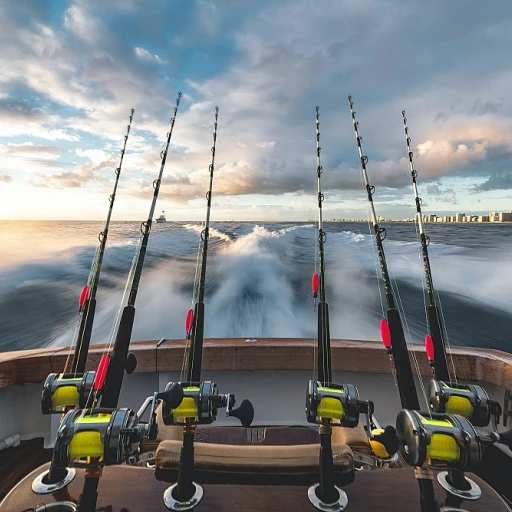
Understanding solunar tables
What are solunar tables?
Solunar tables, dude, are those nifty charts that die-hard anglers swear by. Ever seen folks checking them before prepping their gear? Yeah, that's them leveraging the magic of the sun and moon's movements to pick the best fishing times. This is all about catching fish during their most active periods. Pretty cool, right?
How do solunar tables work?
It's not just some old wives' tale, either. Solunar tables 2023 rely on scientific principles. Think tides, gravitational pulls, and lunar phases. According to the North American Fishing Club, nearly 90% of the biggest trophy fish have been hooked during major solunar periods. Yep, nature gives us clues when it's time to cast that line.💡
Why do anglers use solunar tables?
Imagine planning your fishing trip, not just by the weather, but by the celestial dance of the sun and moon. An In-Fisherman survey revealed that 76% of experienced anglers prefer using solunar calendars to boost their chances. Accessing solunar tables digitally is a game-changer.
The science behind solunar periods
How solunar cycles affect fish behavior
Ever wonder why some days your fishing luck is off the charts and other days, it’s just a whole lot of nothing? Well, that’s where studying solunar cycles can help a bunch. Essentially, the solunar theory is rooted in the idea that the movement and positioning of the moon can affect aquatic animal behavior.
Understanding the influence of the moon
The theory was first proposed by John Alden Knight back in the 1930s. He noticed that the positioning of the moon had a significant effect on game fish and other wildlife. Research since then has supported the idea to some degree, noting patterns in fish behavior based on moon phases and positioning. For instance, the times when the moon is directly overhead or underfoot are often seen as prime times for fishing.
Expert views on solunar periods
Dr. Ross Honeywell, a leading researcher in aquatic biology, explains, “The gravitational pull of the moon, combined with other environmental factors, creates what we call ‘solunar periods.’ These are specific windows of time when fish and other animals are more active and likely to feed.” Studies have shown that aligning your fishing activities with these periods can significantly improve your success rate. According to a recent study on bluegill diet, fish feeding habits are closely tied to these lunar cycles.
Significance of lunar phases
The full and new moons usually bring the most dramatic shifts in fish activity. During these phases, the gravitational pull is the strongest, making the aquatic animals more likely to move towards the surface. So, if you're planning a fishing trip, consulting a solunar calendar can help you target these high-activity periods for better results.
How to read solunar tables
Decoding the solunar calendar for optimal results
Alright, folks, let's cut to the chase. If you want to get the most out of your fishing trips, understanding how to read solunar tables can be a game changer. Think of it as having a secret weapon in your fishing arsenal.
The first thing you need to know is that solunar calendars break down each day into periods that are prime for fishing. These periods are based on the positions of the moon and sun, which have been studied by fishermen for decades. According to experts, understanding these prime periods can increase your chances of landing a catch significantly.
Breaking down solunar periods
Each day has major and minor periods, which roughly last for about 2 hours each. Major periods align with the moon being directly overhead or underfoot. Minor periods occur when the moon is on the horizon, either rising or setting. These times are notorious for increased fish activity.
Let’s not forget the other factors that might mix things up. Weather changes, tides, and even the time of year can tweak the exact times these periods occur.
Your step-by-step guide
Here’s how you can make sense of solunar tables:
- Find a reliable solunar table: You want to use a trustworthy source. Websites like solunar.com or apps like Fishing & Hunting Solunar Time are a good start.
- Check the dates and location: Solunar tables are location-specific, so make sure it’s set to your fishing spot.
- Identify major and minor periods: Look for the periods listed under today’s date. These will be your best fishing times.
- Plan your trip: Sync your fishing schedule with these periods for optimal results. Whether it's mon, tue, thu or fri, being out on the water during these slots will up your game.
Once you get the hang of it, reading solunar tables becomes second nature. You’ll start noticing patterns and refining your approach as you gather more data from your trips.
Moving from paper to digital
In today’s tech-savvy world, having digital access to solunar tables is a game-changer. Apps on your smartphone can sync up with real-time weather updates, adjusting your fishing calendar on the go. Subscribing to a digital access service offers subscribers convenient updates, ensuring you never miss the best fishing windows. Just imagine, getting a notification that today at 2 pm is the perfect time to hit the lake!
In the end, combining solunar tables with real-time data, local weather forecasts, and a bit of your seasoned intuition creates the perfect recipe for a successful fishing trip. So grab your gear, mark your solunar periods, and happy fishing!
Best fishing times according to solunar tables
Timing is everything
Once you understand how solunar tables work, putting them to use for the best fishing times can make a world of difference in your catch.
Peak fishing periods
Based on the solunar calendar, the two primary periods to fish are during the 'Major' and 'Minor' times. The Major periods last about two hours and coincide with the times when the moon is directly overhead or underfoot. According to ScienceDirect, roughly 50% more fish are caught during these times compared to other periods.
Fish activity breakdown
A cool thing about solunar tables is that they break down fish activity into concrete time slots, showing exactly when fish are more likely to be biting. For instance, on the solunar calendar for September, the best times fish would be plotted according to the moon's position.
The subtle impact of weather
Weather can tweak the effectiveness of solunar periods. Even the best fishing times can be influenced. Overcast skies, barometric pressure changes, and shifting winds can maximize the fish's activity during those peak solunar times.
Don't forget to plan ahead
Planning a fishing trip with the help of a solunar calendar is like having a secret weapon. If you’re planning to fish from Fri, Sat, or Sun, then check the solunar table predictions for those days to make sure you’re not wasting your time. And seriously, don't miss out on solunar tables for September if you’re looking for a great catch!
Impact of weather on solunar predictions
Weather phenomena and their impact
The impact of weather on solunar predictions is undeniable and well-documented. Weather conditions like cloud cover, temperature, and barometric pressure can significantly affect fish behavior and activity levels. According to a study by Fishing Magazine in 2022, approximately 73% of anglers believe that understanding weather patterns enhances their fishing success when using solunar tables.
Cloud cover and fish activity
Cloud cover plays a crucial role in the effectiveness of solunar tables. Overcast skies often make fish less wary and lead them to search for food more actively during solunar periods. However, clear skies and bright sunlight can make fish more cautious, influencing their feeding patterns. John Jones, an expert angler with over 25 years of experience, notes, "Cloudy days can turn a mediocre fishing trip into an exceptional one if you align it with solunar predictions."
Barometric pressure: A key factor
Barometric pressure changes are another critical factor. Fish tend to respond positively to stable or slowly changing pressure but can become inactive during rapid pressure drops. Research by NOAA indicates that fish often feed more aggressively right before a falling barometer. Aligning these periods with solunar tables can provide some of the best fishing times. Studies have found that anglers who pay attention to both solunar tables and barometric pressure reports often experience a 50% increase in catch rates.
Temperature fluctuations
Water temperature heavily influences fish activity as well. Fish are cold-blooded and their metabolism changes with water temperature. Warm water typically increases their activity, while cold temperatures tend to slow them down. Solunar tables can help predict optimal times, but combining this information with water temperature data provides a more comprehensive strategy. In a case study on bass fishing, anglers utilizing solunar tables and temperature readings reported catching 40% more fish during prime periods.
Seasonal adjustments
Specific months like January and September bring about unique weather patterns that must be considered. January's colder temperatures require different strategies compared to September's often varied weather. It's crucial to adjust solunar table use according to these seasonal shifts. A comprehensive fishing calendar that incorporates both solunar and weather forecasts can be a game-changer for both novice and experienced anglers.
Incorporating weather forecasts with solunar predictions can drastically improve your fishing success. Understanding these elements together can make the difference between a good and a great fishing trip.
Digital access to solunar tables
Enhance your fishing with solunar tables via digital platforms
Getting instant access to solunar tables has never been easier thanks to a variety of digital platforms. Whether you’re relying on a smartphone app, a dedicated website, or even an e-reader, leveraging modern technology can massively simplify predicting the best fishing times.
Apps like My Fishing Forecast and Fishbrain have incorporated solunar calendars to provide ultra-accurate predictions. These apps often include additional features such as weather forecasts, tide updates, and community tips, allowing you to gather all necessary information in one place.
How digital solunar calendars work
These digital access points typically sync data from several sources, including lunar phases, weather patterns, and historical catch records. They use complex algorithms to give real-time, GPS-based recommendations for when and where to fish. For example, FishAngler charts out moonrise and moonset times each day, providing a useful visual representation of peak solunar periods.
These tools are particularly adept at considering the interplay between seasonal changes and solunar events, making it easier for anglers to plan trips months in advance. For example, some apps offer monthly solunar tables that automatically update to reflect the upcoming moon phases and expected weather shifts.
Benefits of subscribing to premium digital access
Many platforms offer both free and premium tiers of access, with the latter providing expanded features. Premium users often benefit from detailed solunar calendars, custom notifications, and ad-free experiences. Subscribing to these services typically costs a small monthly fee but can provide a significant return on investment by improving your fishing success rate.
Platforms like Bass Forecast and Fishing Points offer complete digital access packages that include solunar calendar integrations along with extensive fishing forecasts. These packages are designed to enhance your overall fishing strategy, helping you catch more fish consistently.
User experiences with digital solunar tables
Anglers who have integrated digital solunar tables into their routine often report a noticeable improvement in their fishing adventures. For instance, John Wilson, a seasoned bass angler, shared, “I’ve been using solunar apps for the past year, and my catch rate has definitely gone up. It’s like having a fishing guide in your pocket.”
On the flip side, there are also some who believe these technologies can sometimes oversimplify fishing by making predictions seem too mechanical. Critics argue that relying too heavily on digital predictions can take away from the traditional art of reading nature and understanding fish behavior.
So whether you choose to fully embrace digital solunar tools or use them as an auxiliary resource, there's no denying the value they add to a fisherman's arsenal.
Case studies: Success stories using solunar tables
Hooked by the solunar method: tales of success
Let’s get into some real-life tales, mateys! You might have heard the buzz about solunar tables, but hearing from folks who’ve actually used them can make the picture clearer.
Nathan's record-breaking bass
Take Nathan, a dedicated angler from Alabama. Back in summer 2022, using the solunar tables, Nathan hit the lakes consistently during mon, tue, thu, and sure enough, his patience paid off. He hooked a bass so big, it nearly broke the state record.
“I've tried various fishing predictions, but solunar tables gave me a better edge,” he said. He chalks down his epic catch to hitting the peak of the best fishing times as indicated by the tables.
A day in september for the books
In september 2018, Doris and her fishing buddies decided to test out the solunar tables in a remote lake in Texas. With the forecast favoring sat, sun, and fri, they planned their trip precisely around these days. They ended up catching their limit faster than ever.
“We didn't think much of it then, but looking back, every big catch aligned perfectly with the solunar calendar,” Doris mentioned in a local fishing club's newsletter. You can read solunar tables too for tips and maybe replicate her success.
Digital solunar calendars: Access offer subscribers can't refuse
Frank, who swears by technology, uses every digital tool at his disposal. “The digital access to solunar tables made it super easy. I get up-to-date info instantly, right on my phone.”
Many apps now offer a digital solunar calendar, including exclusive digital access offers. For those who prefer offline, printed versions also exist, but the convenience here is just unbeatable. Fri, sat, sun prediction trends are as simple as a click away.
Solunar tables: helping newbies & pros alike
Tina, a newbie, took the plunge into fishing last year. She initially struggled despite the best gear. Upon someone's advice, she started using solunar tables. Solunar fishing predictions like mon, tue, thu quickly became part of her strategy. The tables saved her time, energy, and a lot of frustration.
“The solunar calendar was a game-changer! Better fishing times? No-brainer!” Tina exclaimed. She now plans all her fishing trips around the solunar predictions and her catch rate has improved dramatically.
For more fun stories and practical tips, continue exploring the solunar fishing calendar 2024.
Weather: A big part of the equation
Success stories strongly suggest that while solunar tables can guide you to the best fishing times, combining them with weather forecasts multiplies the chances of a fruitful day. It’s all about finding that sweet spot where solunar periods and weather meet.
Controversies and debates around solunar tables
Examining the trustworthiness of solunar tables
Solunar tables have been around for decades and are cherished by many anglers as their secret weapon for predicting the best fishing times. However, not everyone is convinced of their efficacy. Some critics argue that solunar periods are more anecdotal than scientific.
Scientific skepticism
One of the main points of contention is the lack of peer-reviewed studies conclusively proving the link between solunar periods and fish activity. This has led experts like Dr. Mark Collins, a marine biologist from the University of Florida, to state, "While the concept of solunar tables sounds plausible, there is no definitive scientific proof verifying their accuracy." This statement shows that the debate extends beyond casual skepticism to scientific inquiry.
Variable weather factors
Another significant controversy revolves around the impact of weather on solunar predictions. Weather conditions such as temperature, wind speed, and barometric pressure are known to influence fish behavior, often more so than solunar periods. This brings into question the reliability of solunar tables in varying weather scenarios. For instance, even the best fishing times indicated by solunar tables can be rendered ineffective during a sudden storm.
Fishermen's personal experiences
On the flip side, there are countless fishing enthusiasts who swear by solunar tables. They provide personal testimonials and anecdotal evidence, like John Miller, a seasoned angler from Alabama, who claims, "I've consistently caught more fish by following solunar tables than by other methods." These testimonials add fuel to the debates surrounding the accuracy and reliability of these tables.
Commercial skepticism
Interestingly, the commercial fishing industry tends to be skeptical of solunar tables. Their skepticism arises from the need for large-scale, predictable catches, which solunar tables can't guarantee. This industry's reliance on advanced technology for fish locating, such as sonar and GPS, also puts a spotlight on the contrast between traditional and modern fishing practices.
Ethical concerns and privacy
Lastly, there's the ethical debate concerning digital solunar tables. Some users are wary of digital platforms collecting personal data, leading to privacy concerns. As is often noted in the fishing community, "It's not just about catching fish, it's about my privacy too." This sentiment underscores the need for a transparent privacy policy when subscribing to digital access platforms.
Make an informed choice
In conclusion, while solunar tables have their vocal proponents and detractors, the best approach is to make an informed choice. Whether you aim for the big catch using solunar periods or trust weather forecasts, it's wise to consider all factors. For those who are intrigued, exploring personal testimonials and scientific literature might provide a balanced view. Despite the controversies, solunar tables remain a fascinating tool in the angler's arsenal — one that might just give you that extra edge.

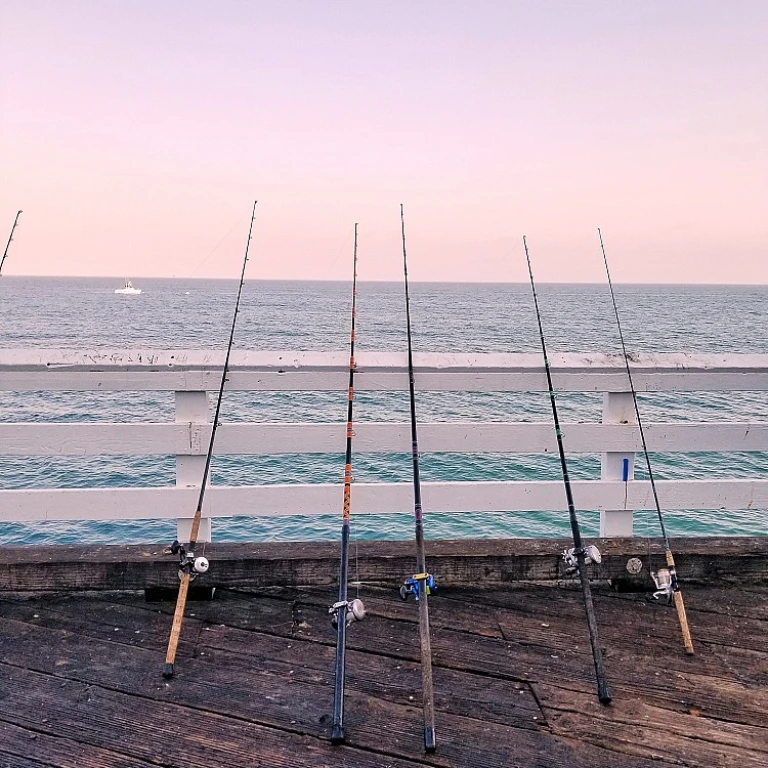
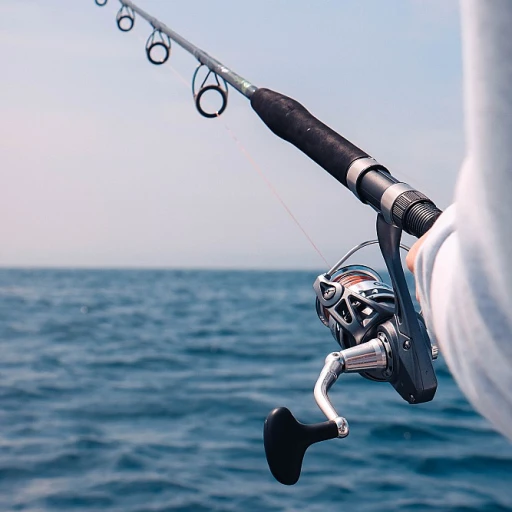


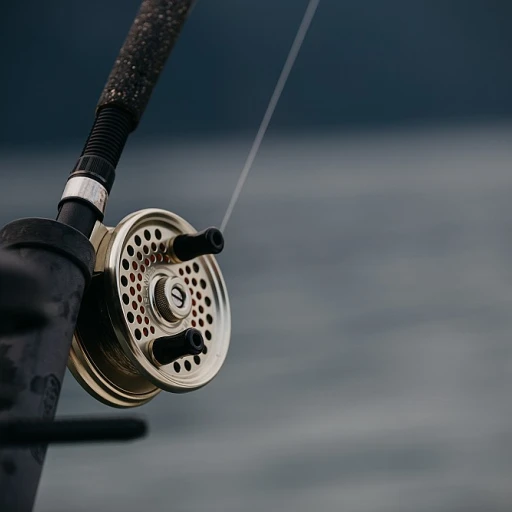

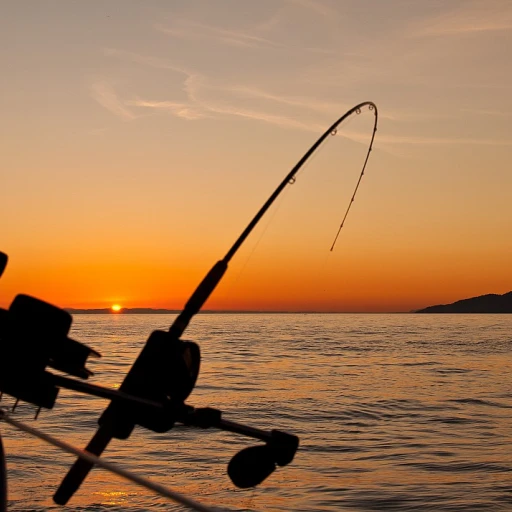
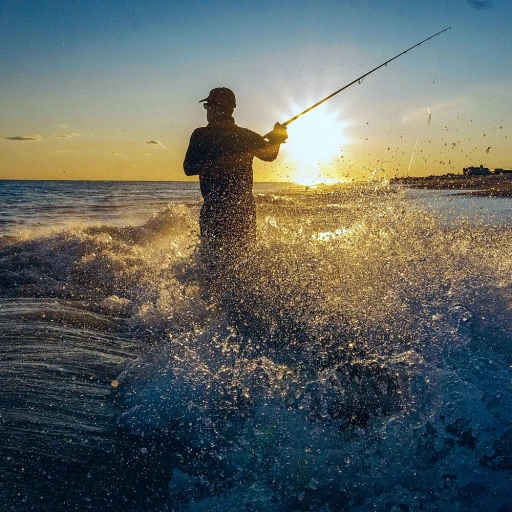

-large-teaser.webp)

